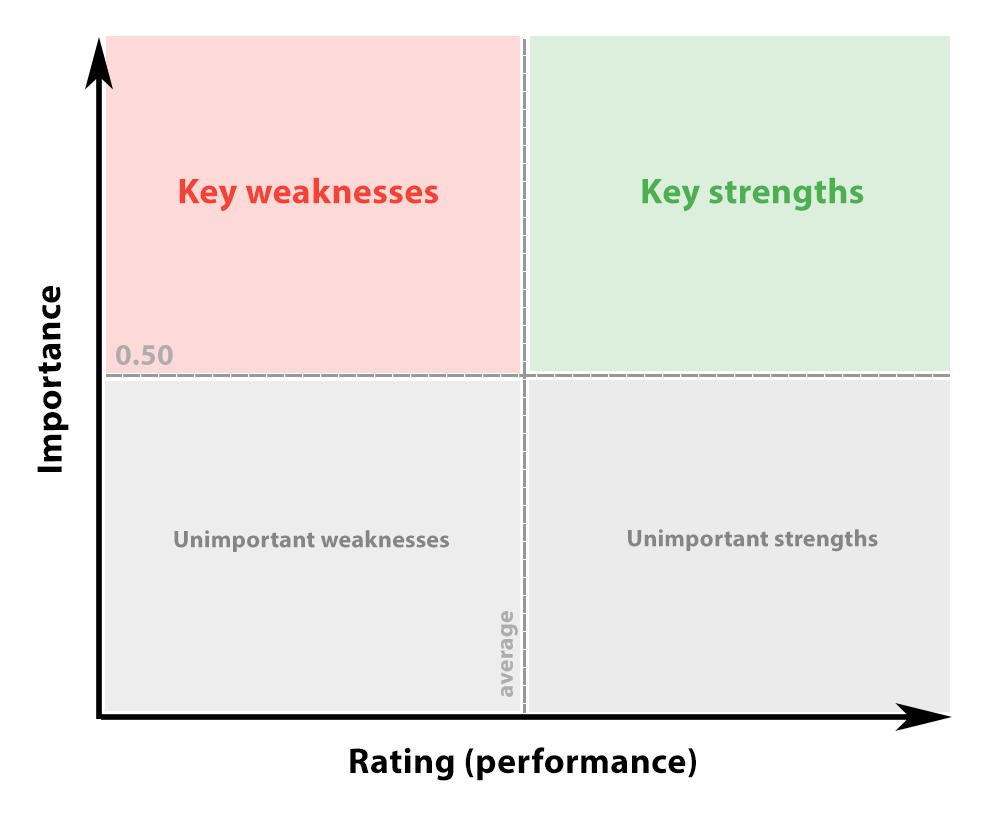
So you want to improve your guest experience but don’t know where to start.
A key driver analysis can help with that. It’s a useful approach to understanding why customers act the way they do. Attractions can leverage this to find out what fuels guest satisfaction and how to continuously improve upon it.
Let’s delve into how a key driver analysis can help you improve your guest experience.
Why is key driver analysis important?
How to read a key driver analysis report?
- Identify areas of focus
- Maximize profits by improving customer experience
- Improve your Net Promoter Score (NPS)
What is key driver analysis?
Key driver analysis is a market research tool that helps businesses better understand customer behavior.
You can use this analytical process to identify the relationship between potential drivers (the independent variables) and guest behavior (the dependent variable).
A key driver analysis can help you answer questions like What’s ultimately convincing visitors to buy a ticket online? What’s driving your positive reviews? Why are guests recommending your attraction to others?
Guests are typically presented with these questions through an online survey asking them to rate a series of attributes, or independent variables, on a scale.
The questionnaire provides your company with insight into what factors are most important to your guests — and a key driver analysis helps you further compare the importance of each of these features relative to another. This way, you can pinpoint the most impactful drivers of customer satisfaction.
Why is key driver analysis important?
When guests reply to a customer feedback survey, their responses will tell you whether they’re feeling satisfied or not with your service. A key driver analysis will tell you what’s causing them to feel that way.
Further analysis of your feedback can identify key drivers behind guest dissatisfaction and help your attraction identify areas of improvement. When you know what drives your guests’ dissatisfaction, you can start to improve those areas of your business. This, in turn, will result in a better guest experience and happier guests.
For example, guests at a waterpark say they bring their own snacks from home because the park’s options are too expensive. After conducting a key driver analysis, though, you find out that the quality of food available at the park could be improved.
The report shows that if better food was available, the waterpark’s guests would be willing to spend more on-site instead of bringing lunch from home. The waterpark can then invest in improving the quality of the food at the park and therefore increase its revenue, instead of doing away with it altogether.
When your guests are happy, you’re able to maximize your profitability. Why? Because happy customers can result in brand loyalty, repeat visits, and word-of-mouth marketing.
A key driver analysis also tells you what factors have the strongest influence on your guest satisfaction. For example, it might show that friendly staff members are largely responsible for the positive reviews you receive from guests and that long queue times are negatively impacting your guest satisfaction.
Then, your attraction could focus on improving the areas that will bring them the most return, such as investing in virtual queuing.
How to read a key driver analysis report?

Source: CheckMarket
A key driver analysis report will come in the form of a 2×2 chart that’ll show your key weaknesses, key strengths, unimportant weaknesses, and unimportant strengths.
The customer experience factors that you’re measuring will be plotted on a graph according to their importance to the customer. On the other axis, you’ll see your business’ performance in those areas.
You’ll be looking at four quadrants. The most essential will be the one that lists the factors that are very important to your customers, but your performance in those areas is low. These are your key weaknesses. Working on these aspects of your guest experience will have the most significant impact on your customers.
3 examples for how to use it
Not sure if a key driver analysis is the right research tool for your attraction? Let’s take a look at three ways it can help a tourism business improve its customer experience.
Identify areas of focus
As mentioned in the above tip, a key driver analysis identifies the factors that have the most impact on your guest experience. This tells your team where to focus its time and energy.
When you know what factors have the biggest impact on the happiness of your guests, you can strategize ways to improve in those specific areas. You’ll be able to give your customer service team clear directions and will likely see results quickly.
For example, if you run a museum and find that guests are leaving your venue unhappy, you’ll send them a feedback survey to understand what’s going wrong. After further analyzing their responses, you find that “poor signage” is negatively impacting your guest experience. Your guests are unable to find restrooms or the exhibits they want to see.
Now you know that if you focus on improving your existing signage inside the museum, you’ll likely see an increase in customer satisfaction.
Maximize profits by improving customer experience
If you’re not hitting your desired revenue marks, your customer experience can likely be improved.
A key driver analysis can help you identify the specific factors that are impacting ticket purchases or guest spending inside your venue. Let’s take a look at online ticket purchases, specifically. You can deploy a website customer feedback survey on your post-purchase page to ask guests how they feel about your checkout process. Another survey might ask guests who are about to abandon their cart why they’re inclined to do so.
Their responses will give you insight into what’s encouraging or hindering direct bookings on your website. A key driver analysis might show that you don’t accept PayPal payments, which is your guests’ preferred payment method. Therefore, they’re choosing to book through a third-party site that does accept it.
You’d then know that to improve your guest experience, you can start accepting their preferred method of payment.
By understanding what is impacting their decisions to buy a ticket or spend more during their visit, you’ll be able to come up with a strategy to maximize your profits.
Improve your Net Promoter Score (NPS)
Your Net Promoter Score (NPS) is a metric used to gauge customer loyalty. NPS scores are measured with a single-question survey that asks “On a scale of 1 to 10, how likely are you to recommend our attraction to your friends and colleagues?” The higher the score, the happier your guests are with your service and the more loyal they are to your brand.
When you know the key drivers of customer behavior, including what drives customer satisfaction, you can focus on improving in those areas to make your guests even happier. Key driver analysis helps you better understand guest expectations. And when you improve in the areas that matter most to them, they’ll be more likely to recommend your attraction to others.
For example, if you performed a key driver analysis on the feedback received from a customer satisfaction survey, you might find that “kind customer service” is one of the most important attributes of your guest experience, according to your guests. Your attraction can then focus on training your staff to treat guests with kindness so that you can continuously meet their expectations.
***
Your attraction can gain valuable customer insight through key driver analysis. The next time you’re brainstorming ways to improve your customer experience, consider investing in this powerful form of market research.
Dig into your customer experience data and pinpoint areas of improvement. Have your website bookings decreased? Are you receiving negative feedback? Did you experience a sudden drop in your NPS score?
Then, perform a key driver analysis to identify what’s causing the issue in the first place. Odds are your guests have something to say about it, and once you check in with them, you’ll have a better understanding of what you can do to fix it.




